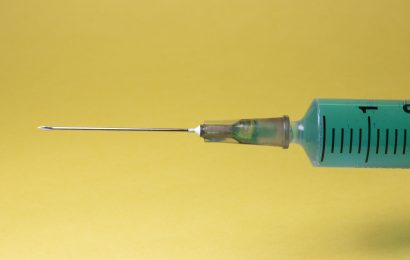During screening colonoscopy, a scope withdrawal time (WT) of 9 minutes vs 6 minutes led to a reduced adenoma miss rate (AMR) and advanced adenoma miss rate (AAMR) and an improved adenoma detection rate (ADR), according to a randomized controlled trial conducted in China.
“Individual colonoscopists may acquire significant benefits in the ADR, AMR, AAMR, and high-risk adenoma miss rate from a 3-minute WT prolongation without compromising detection efficiency,” Zhao-Shen Li, MD, PhD, director, Department of Gastroenterology, Changhai Hospital and Second Military Medical University, Shanghai, told Medscape Medical News.
Based on evidence to date, the 9-minute WT “deserves to be considered as a new quality indicator to further optimize colonoscopy quality,” Li added.
The study is published online in the American Journal of Gastroenterology.
“This study certainly supports the notion that lengthening the examination time during colonoscopy results in more adenomas being detected,” Ziad F. Gellad, MD, who wasn’t involved in the study, told Medscape Medical News.
“When linking that with other studies showing a positive correlation between adenoma detection rate and interval cancers, we can conjecture that these longer exams will result in improved cancer detection. This makes intuitive sense,” said Gellad, associate professor of medicine, Duke University Medical Center, Durham, North Carolina.
Supportive Evidence
In an earlier study, Li and colleagues found that prolonging the WT from a mean of 6 minutes to 9 minutes significantly improved the ADR (27.1% vs 36.6%, P = .001).
Their latest study involved 733 asymptomatic adults aged 40-75 years undergoing screening colonoscopy by 15 gastroenterologists at 11 tertiary hospitals in China.
Participants were randomly allocated to segmental tandem screening colonoscopy with 9-minute withdrawal first (9MF) followed by 6-minute withdrawal (6MF) or vice versa.
In an intention-to-treat analysis, when compared with 6MF, 9MF significantly reduced the lesion-level AMR (14.5% vs. 36.6%, P < .001), which was the primary outcome, and the participant-level AMR (10.9% vs 25.9%; P < .001).
9MF also significantly reduced the AAMR (5.3% vs. 46.9%, P = .002), multiple adenoma miss rate (20.7% vs 56.5%; P = .01), and high-risk adenoma miss rate (14.6% vs 39.5%, P = 0.01) — without compromising detection efficiency.
The longer withdrawal time was also associated with a lower false-negative rate for adenomas (5.2% vs 11.7%, P = .002) and high-risk adenomas (2.2% vs 5%; P < .05), as well as a lower rate of shortening the surveillance schedule (P < 0.001).
A 9-minute mean WT also led to an improved ADR (42.3% vs. 33.5%, P = .02). The ADR improvement was associated with diminutive (P = 0.01), flat (P = .01), and tubular adenomas (P = .02).
Notably, colonoscopists with high ADRs (≥ 25%) in routine practice also showed a tendency of ADR improvement through a 3-minute prolongation (41% vs 34.8%; P for interaction = .62), the investigators write.
Gellad told Medscape Medical News the study “reinforces the importance of careful inspection of the colonic mucosa during colonoscopy withdrawal. This should take as long as it takes to do it right, and that will vary by patient and by endoscopist.”
“Measurement of withdrawal time is helpful for quality improvement purposes when physician detection rates or miss rates are below goal,” Gellad added, “but timing the withdrawal should not be a goal in and of itself,”
The study was supported by the National Science and Technology Plan Project of the Ministry of Science and Technology of China. The authors report no relevant financial relationships. Gellad is a consultant for Merck & Co. and Novo Nordisk and a co-founder of Higgs Boson, Inc.
Am J Gastroenterol. Published online October 10, 2022. Abstract
For more news, follow Medscape on Facebook, Twitter, Instagram, YouTube, and LinkedIn
Source: Read Full Article


